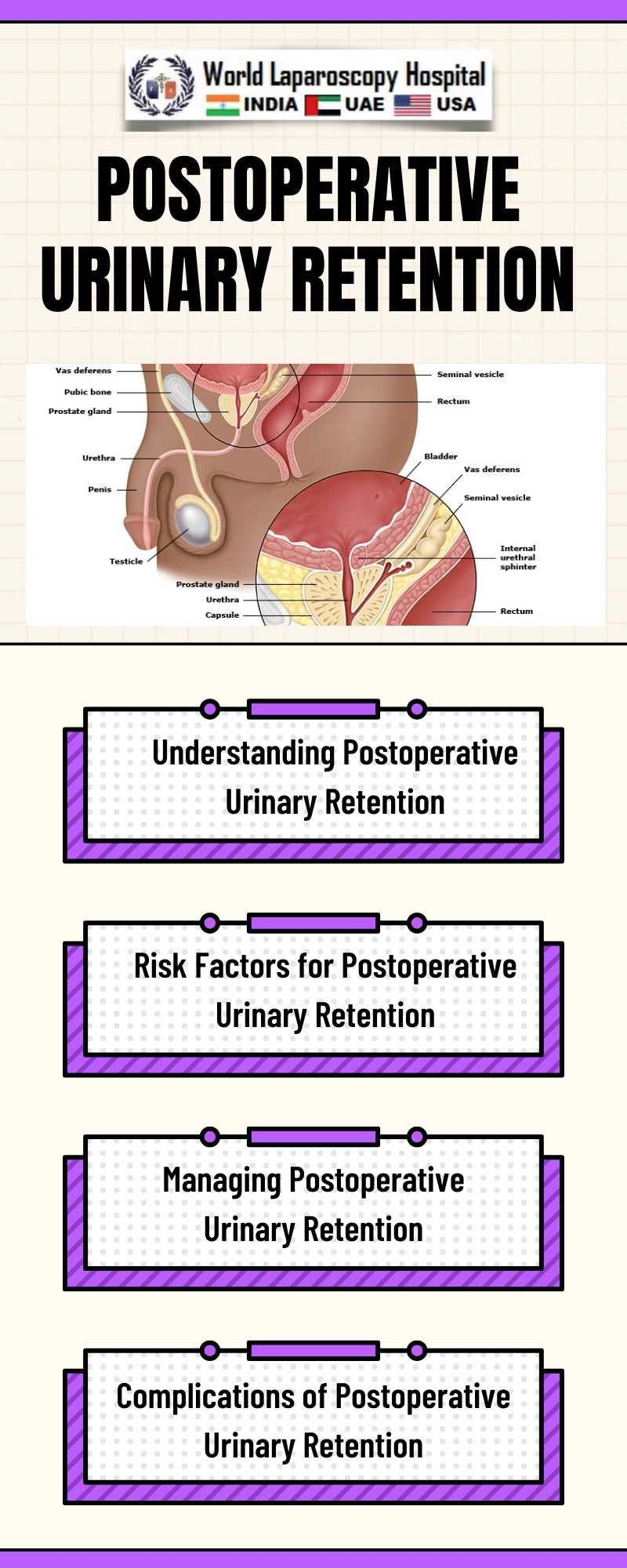Postoperative urinary retention: Inability to urinate following surgery
Postoperative urinary retention (POUR) is a common yet often underestimated complication following surgery. It occurs when a patient is unable to empty their bladder adequately after a surgical procedure, leading to discomfort, potential complications, and prolonged hospital stays. Understanding the causes, symptoms, and management strategies for POUR is crucial for healthcare providers to ensure optimal patient outcomes.

Causes of Postoperative Urinary Retention:
Several factors contribute to the development of POUR, including:
- Anesthesia: The use of anesthesia can temporarily impair bladder function, leading to difficulty urinating.
- Medications: Certain medications used during surgery can affect bladder muscle function, increasing the risk of retention.
- Surgical Trauma: Manipulation of pelvic organs or nerves during surgery can cause temporary bladder dysfunction.
- Fluid Intake: Inadequate fluid intake or excessive fluid loss during surgery can affect bladder function.
- Patient Factors: Age, gender, preexisting bladder conditions, and the type of surgery can also influence the risk of POUR.
Symptoms of Postoperative Urinary Retention:
Patients with POUR may experience:
- Frequent urge to urinate without being able to pass urine
- Discomfort or pain in the lower abdomen
- Swelling or bloating in the lower abdomen
- Inability to produce urine despite the urge to urinate
- Bladder distention, which can be palpated by a healthcare provider
Management of Postoperative Urinary Retention:
Early recognition and management of POUR are essential to prevent complications. Management strategies may include:
- Monitoring: Regular assessment of bladder function through palpation and ultrasound.
- Fluid Management: Ensuring adequate fluid intake to promote bladder function.
- Catheterization: Insertion of a urinary catheter to empty the bladder if conservative measures fail.
- Medications: Use of medications to relax the bladder muscles and facilitate urination.
- Bladder Training: Techniques to retrain the bladder muscles to improve voiding.
Preventing Postoperative Urinary Retention:
Preventive measures can help reduce the risk of POUR, including:
- Adequate Preoperative Counseling: Educating patients about the risk of POUR and the importance of early reporting of symptoms.
- Fluid Management: Maintaining optimal fluid balance during surgery.
- Early Mobilization: Encouraging early mobilization to stimulate bladder function.
- Bladder Catheterization: Consideration of catheterization in high-risk patients or during prolonged surgeries.
Conclusion
Postoperative urinary retention is a common complication that requires careful monitoring and management. Healthcare providers should be vigilant in recognizing the signs and symptoms of POUR and implementing appropriate interventions to prevent complications and promote patient comfort and recovery.

Causes of Postoperative Urinary Retention:
Several factors contribute to the development of POUR, including:
- Anesthesia: The use of anesthesia can temporarily impair bladder function, leading to difficulty urinating.
- Medications: Certain medications used during surgery can affect bladder muscle function, increasing the risk of retention.
- Surgical Trauma: Manipulation of pelvic organs or nerves during surgery can cause temporary bladder dysfunction.
- Fluid Intake: Inadequate fluid intake or excessive fluid loss during surgery can affect bladder function.
- Patient Factors: Age, gender, preexisting bladder conditions, and the type of surgery can also influence the risk of POUR.
Symptoms of Postoperative Urinary Retention:
Patients with POUR may experience:
- Frequent urge to urinate without being able to pass urine
- Discomfort or pain in the lower abdomen
- Swelling or bloating in the lower abdomen
- Inability to produce urine despite the urge to urinate
- Bladder distention, which can be palpated by a healthcare provider
Management of Postoperative Urinary Retention:
Early recognition and management of POUR are essential to prevent complications. Management strategies may include:
- Monitoring: Regular assessment of bladder function through palpation and ultrasound.
- Fluid Management: Ensuring adequate fluid intake to promote bladder function.
- Catheterization: Insertion of a urinary catheter to empty the bladder if conservative measures fail.
- Medications: Use of medications to relax the bladder muscles and facilitate urination.
- Bladder Training: Techniques to retrain the bladder muscles to improve voiding.
Preventing Postoperative Urinary Retention:
Preventive measures can help reduce the risk of POUR, including:
- Adequate Preoperative Counseling: Educating patients about the risk of POUR and the importance of early reporting of symptoms.
- Fluid Management: Maintaining optimal fluid balance during surgery.
- Early Mobilization: Encouraging early mobilization to stimulate bladder function.
- Bladder Catheterization: Consideration of catheterization in high-risk patients or during prolonged surgeries.
Conclusion
Postoperative urinary retention is a common complication that requires careful monitoring and management. Healthcare providers should be vigilant in recognizing the signs and symptoms of POUR and implementing appropriate interventions to prevent complications and promote patient comfort and recovery.
1 COMMENTS
Dr. Gagan Sodhi
#1
Feb 26th, 2024 9:36 am
Postoperative urinary retention, a frequent complication, demands vigilant monitoring and intervention. Healthcare providers must swiftly recognize and address signs of POUR to prevent complications and enhance patient comfort and recovery.
| Older Post | Home | Newer Post |





